Abstract
The effects on monitoring performance of a limited hold (LH) terminated by a bell or by electric shock and of periodic rest periods were investigated. The sensitivity of basal skin conductance to different monitoring conditions was also studied. Humans monitored a visual display in several 2-hr sessions under the Holland procedure. In each session, signals were programmed by one of the following three multiple schedules: a variable interval of 6 min (VI 6) and a VI 6 with a limited hold (LH) terminated by a bell; a VI 6 and a VI 6 LH terminated by electric shock; a VI 6 LH terminated by shock and a time-out (TO). The two components of each schedule alternated at 15-min intervals. The average observing response rate of eight subjects was lowest during the VI 6 periods, higher in periods when the LH was terminated by a bell, and highest when the LH was terminated by shock. Periodic TO periods did not appreciably increase the response rate under the VI 6 LH shock component. A differential level of palmar skin conductance under the two components of a schedule was present only under the mult VI 6 LH shock-TO.
Full text
PDF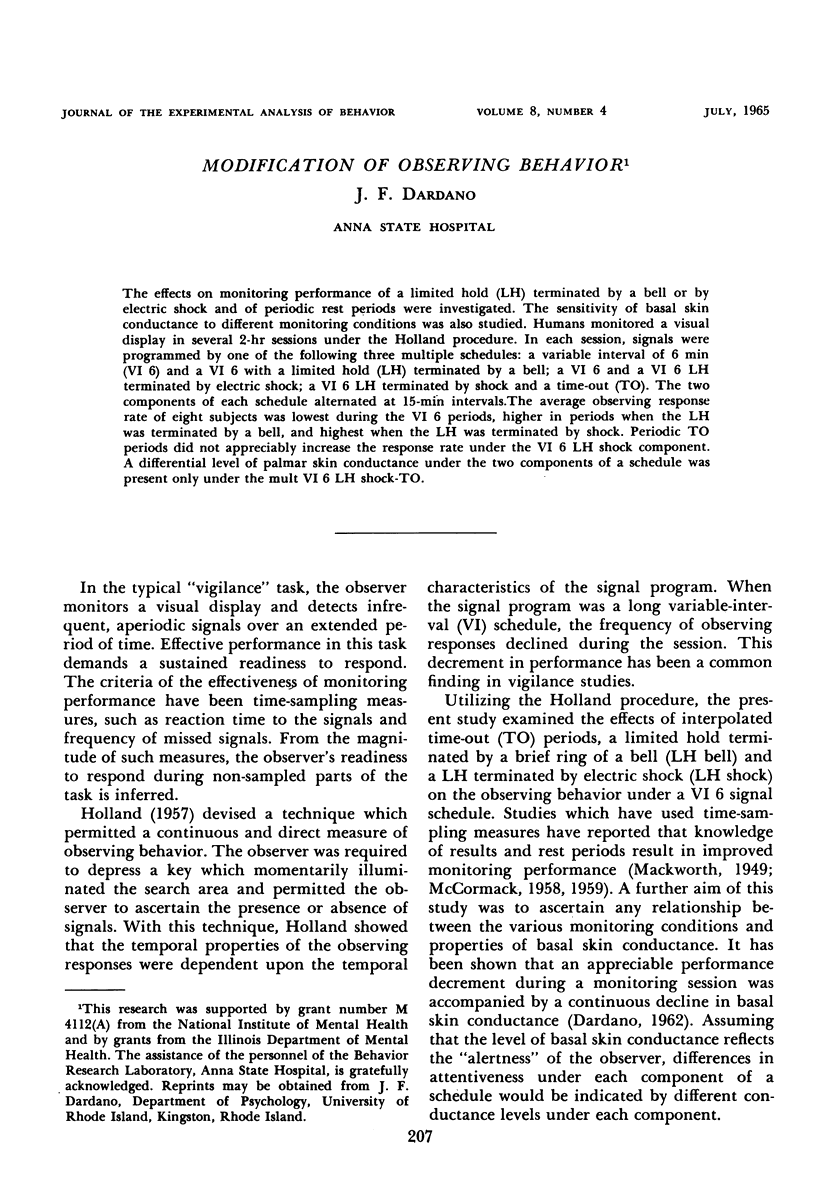
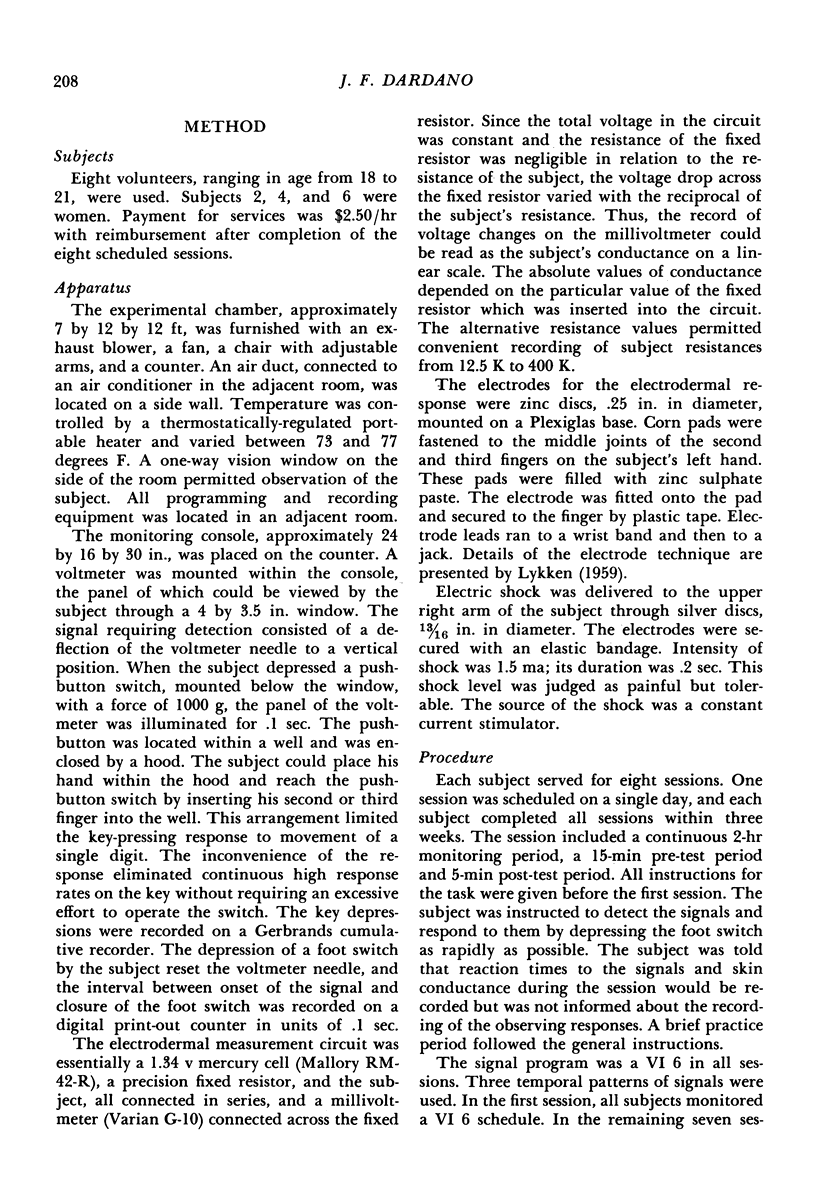
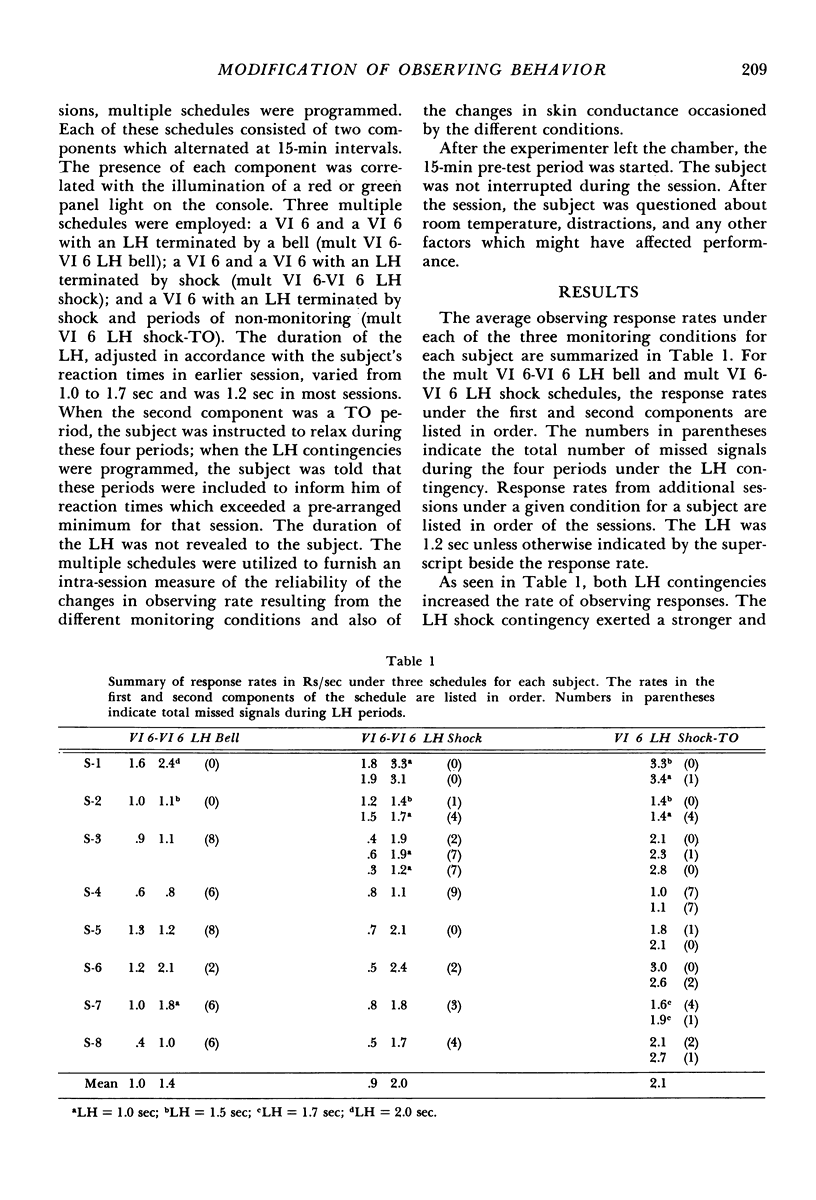
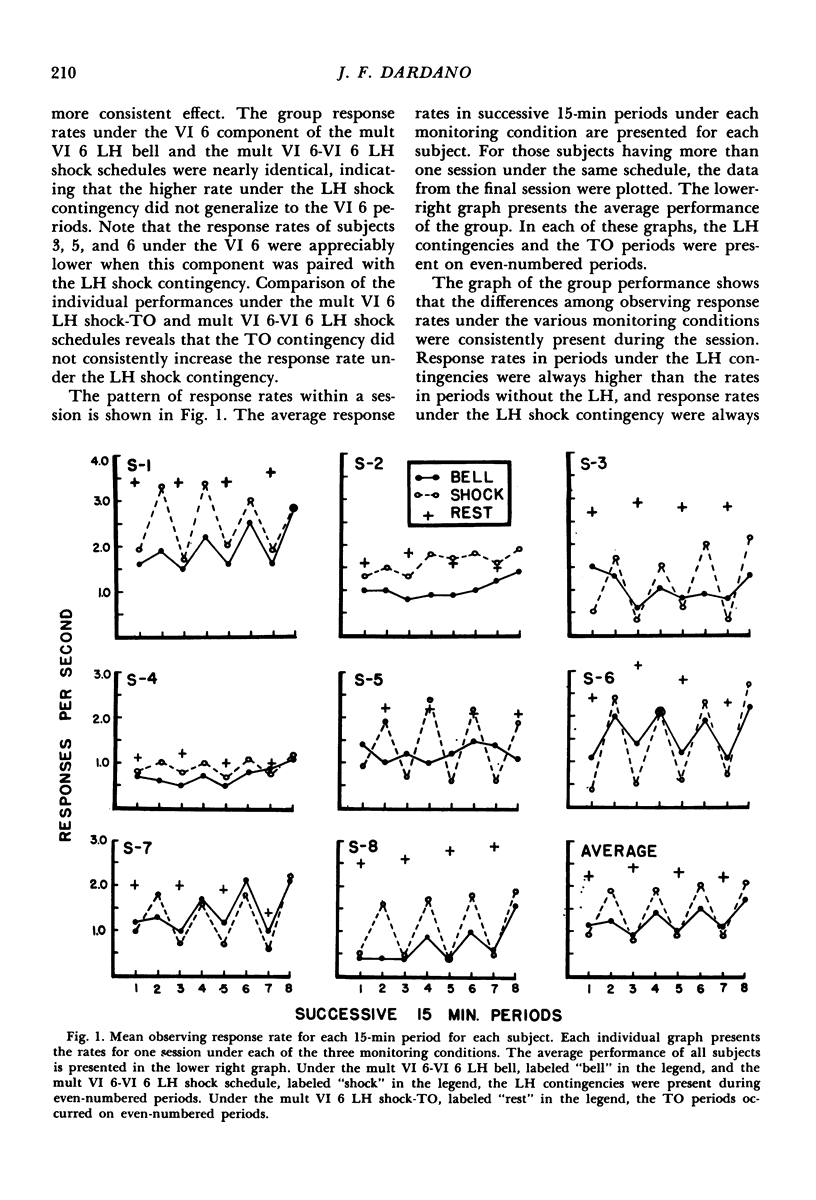
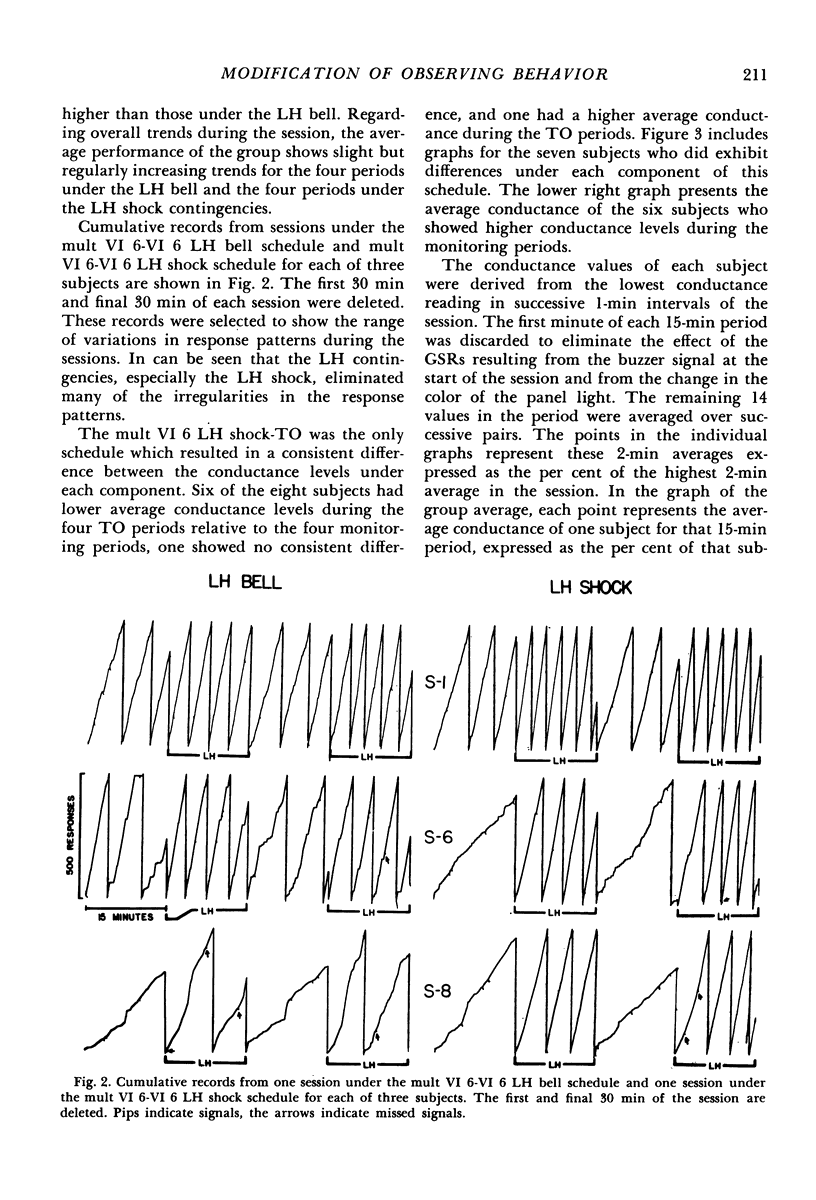
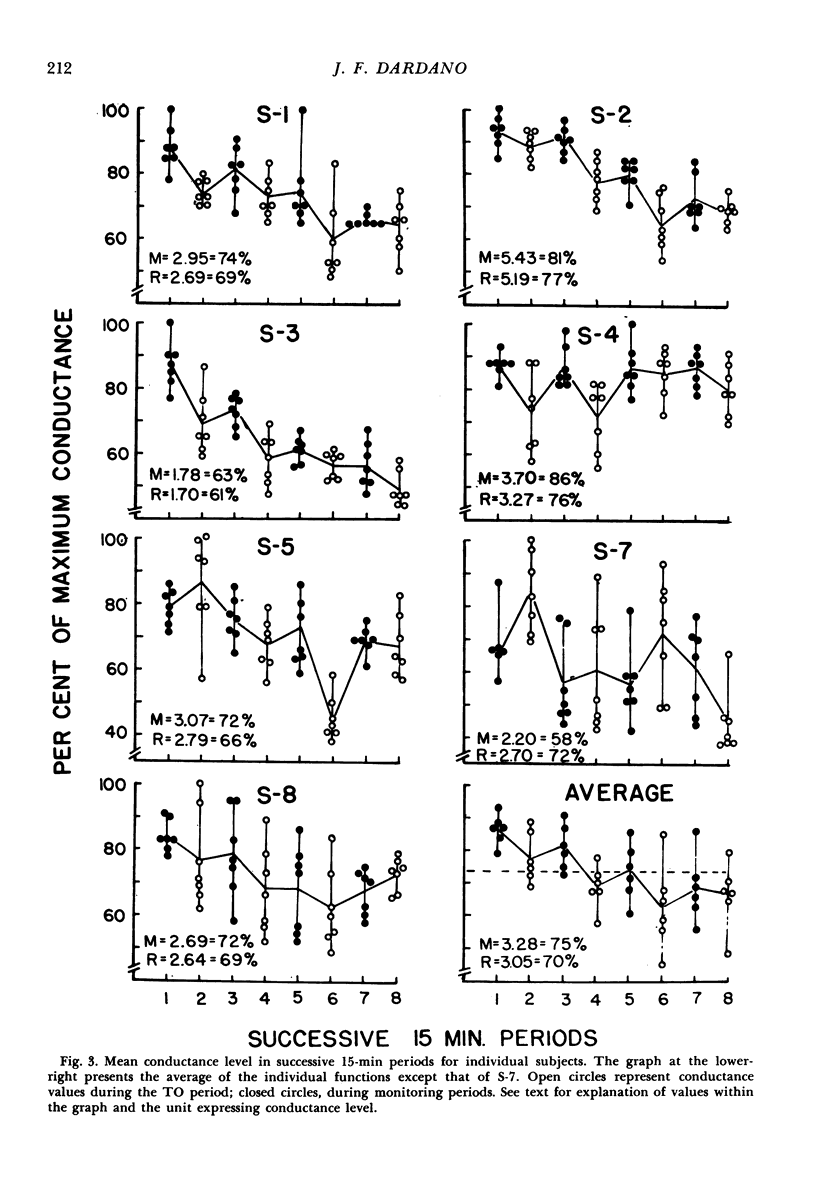
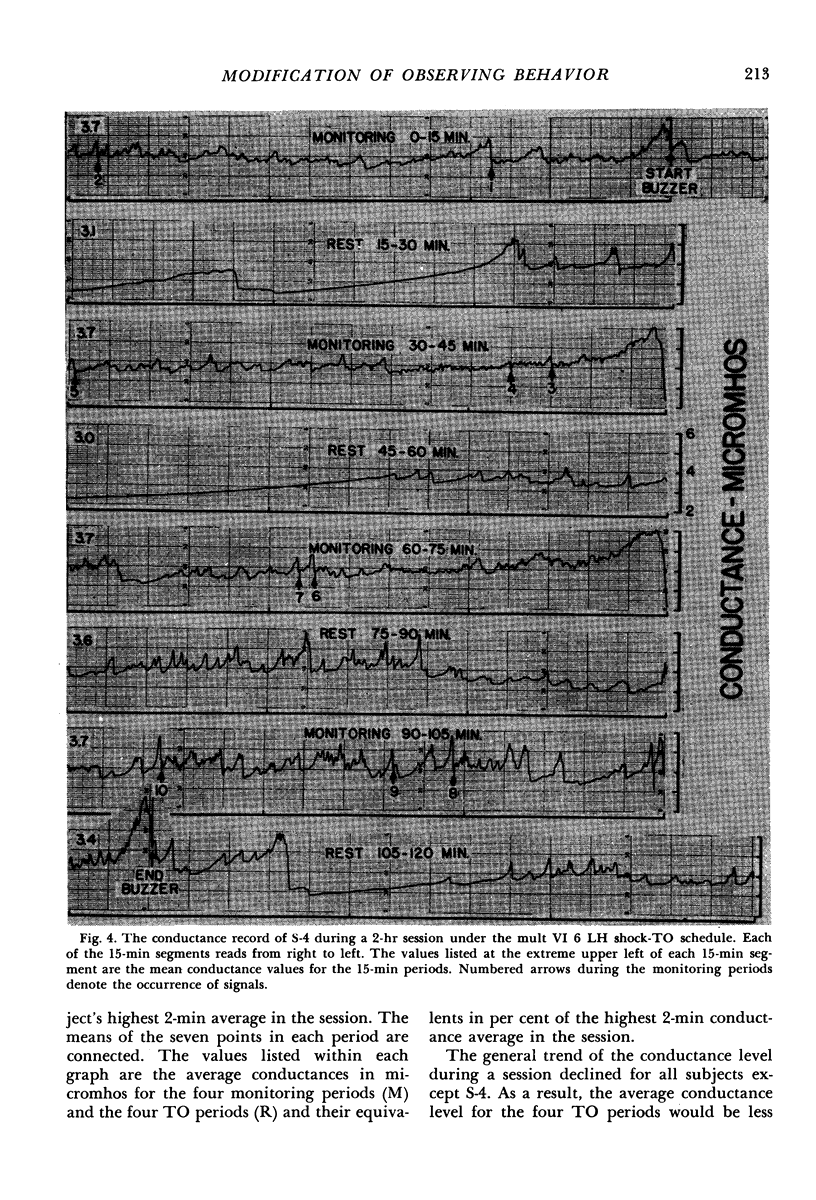
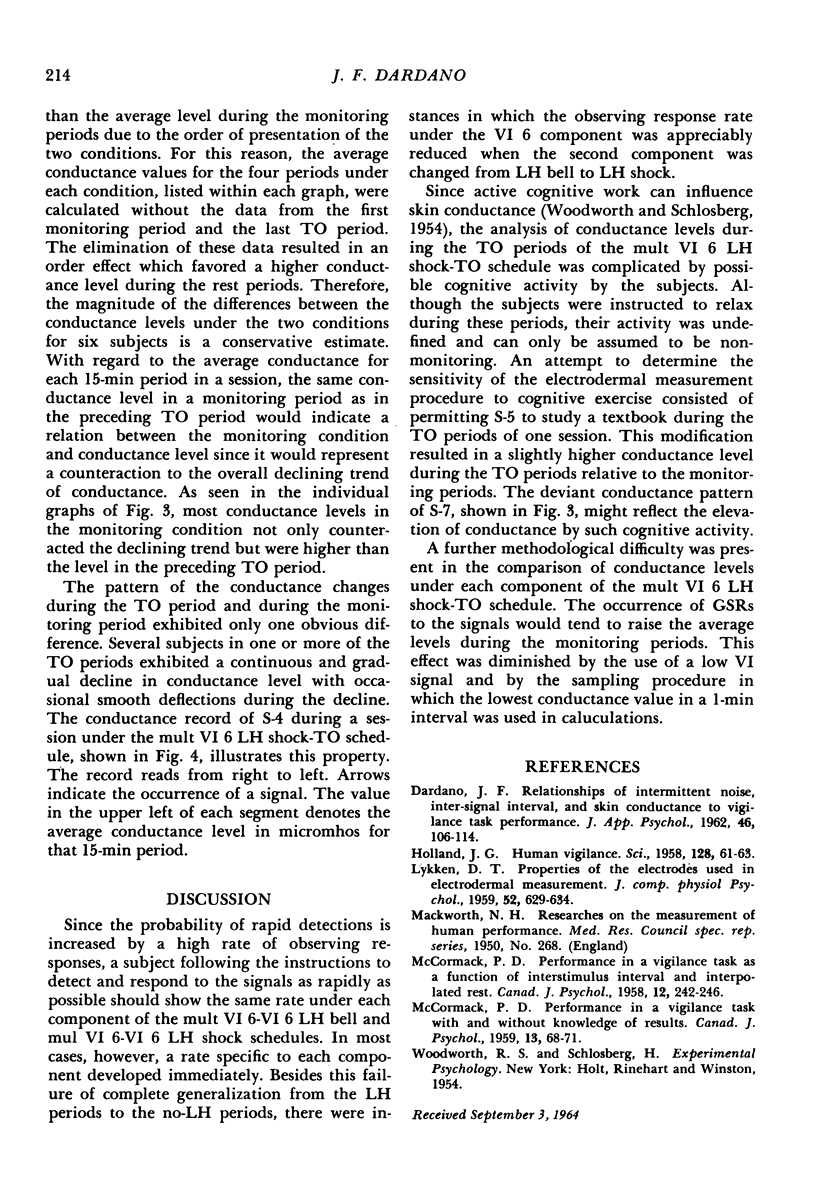
Selected References
These references are in PubMed. This may not be the complete list of references from this article.
- HOLLAND J. G. Human vigilance: the rate of observing an instrument is controlled by the schedule of signal detections. Science. 1958 Jul 11;128(3315):61–67. doi: 10.1126/science.128.3315.61. [DOI] [PubMed] [Google Scholar]
- LYKKEN D. T. Properties of electrodes used in electrodermal measurement. J Comp Physiol Psychol. 1959 Oct;52:629–634. doi: 10.1037/h0047437. [DOI] [PubMed] [Google Scholar]
- McCORMACK P. D. Performance in a vigilance task as a function of interstimulus interval and interpolated rest. Can J Psychol. 1958 Dec;12(4):242–246. doi: 10.1037/h0083749. [DOI] [PubMed] [Google Scholar]


